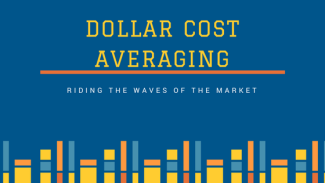
Dollar-Cost Averaging Works (if you let it)
By Gary Silverman, CFP®
When it comes to someone having a well-rounded financial life, I make a few assumptions. One: this person puts money into investment accounts every month. This kind of regular investing keeps the gyrations of the market at bay. But what if you have a lump of money come your way? Or what if you have money already that’s all in cash? Do you move this all at once to a more fully invested position?
I’ve been a proponent of the investment technique called Dollar Cost Averaging (I’ll call it DCA for short). DCA is when, instead of putting a lump of money into your investments, you split that lump into equal amounts and invest at fixed intervals.
That’s the way it’s supposed to work. Here’s what actually happens. You start the DCA process and the market drops like a rock (sound familiar?), so you stop the DCA investments because you don’t want to buy shares if all they are going to do is go down. When you are sure the market is going back up, you restart the DCA. If the market goes up rapidly, you end up dumping in all that you’d planned to invest at once so that you don’t miss ‘certain’ gains.
Don’t do that. Instead, do this:
Let’s say that Uncle Jack left you $300,000. You’re worried that the mutual fund you use might go down. So instead of putting all $300,000 in at once, you divide it into thirty $10,000 blocks invested monthly over the next 2-1/2 years.
By investing at set intervals you keep from letting the market’s emotions control you. By investing set amounts you’ll tend to buy more shares when the market is down and fewer shares when it is up. In fact, if the market zigzags you’ll actually pick up your shares at less than the average cost during that time (trust me…it’s mathematically true).
Let’s review: In theory, DCA helps you by mechanizing your trades so that emotions don’t take over. You’ll end up buying more shares if the market is down and less if the market is up. Thus you’ll, on average, pay less for your investment and generate greater profits.
If you stop and start your investments based on your emotions, you buy fewer shares when the market is down, more shares when the market is up. If the market shoots up, you’ll buy even more. This means you’ll, on average, pay more for your investment and generate fewer profits, if any.
I should let you know that there is another way to do this. Come back next week to find out what it is.
Gary Silverman, CFP® is the founder of Personal Money Planning, LLC, a Wichita Falls retirement planning and investment management firm and author of Real World Investing

